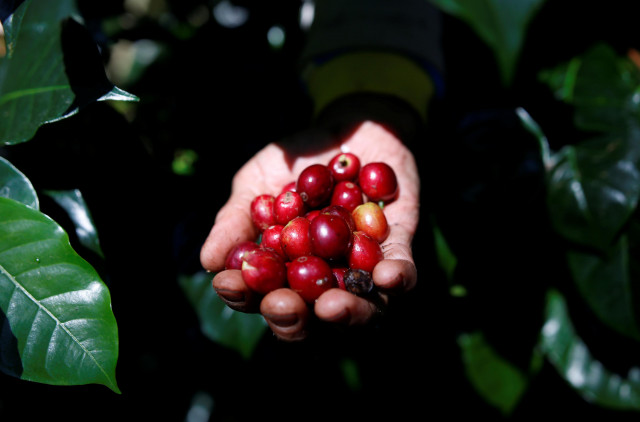Five ways to help Pakistan overcome difficulties in cherry export to China
Officials discuss how to meet quality and safety standards for fruit’s shipment

PHOTO: FILE
“A lot of countries are willing to export cherries to China. I have visited Turkey and other places of origin before. First, we should have strict inspection and quarantine standards; secondly, whether the price is competitive; thirdly, whether cherry production seasons are close,” he said when asked how Pakistani cherries could enter China.
The deputy to the NPC was once at a high place in the General Administration of Customs of China (GACC). The second and third points mentioned above have already been talked in the article “China-Pakistan trade hotline: Pakistani cherries rival Chilean counterparts, yet hard to enter Chinese market.” As to the first point, Zhao Jinping, former director-general of the Research Department of Foreign Economic Relations, Development Research Centre of the State Council, was the first guest to mention it in the special programme on “Cherry and FTA”.
Closer relation between food safety and customs
Zhao believes that quality is not the only factor whether cherries can enter China or not. Besides, well performance in food safety, such as inspection and quarantine, and health standard system construction also contribute to imports of large quantities of Chilean cherries.
Being responsible for national health, every country should make sure the food that enters its territory meets safety standards. Therefore, strengthening food safety cooperation with Pakistan is a significant part of maintaining long-term, sustained and rapid growth in bilateral trade.
“I personally visited Shanghai Entry-Exit Inspection and Quarantine Bureau when lots of imported fruits and vegetables were arriving there. For me, the cherries look very good and delicious, but technical experts can tell at a glance there are indeed tiny worm eggs in some part of the cherries.”
Zhao said China Customs is stepping up efforts to facilitate customs clearance. “The time for customs clearance is greatly reduced. The sampling rate, an important indicator, is now very low, only 1% or even a smaller portion of all imported items will be inspected. In this case, it is important to have a management system that ensures product safety in the entire process and meets health requirements.” China Customs, including the inspection and quarantine department, has established a long-term cooperation relationship with its counterparts from other countries and is making joint efforts for quality control.
“Pakistan Customs should further modernise and promote cooperation with China Customs,” said Zhou Rong, senior researcher at Chongyang Institute for Financial Studies of Renmin University of China.
Cherry production in line with Chinese quarantine standards
GACC and SENASA reached an agreement on cherry quarantine on December 2, 2018. A month later, we found phytosanitary requirements for the import of Argentine cherries on the website of GACC, totalling over 6,800 words, which contain detailed regulations for orchards, packaging, refrigeration, pest monitoring and other factors in the cherry production process. Are these difficult for Pakistan?
“I do not think it is difficult, because our agricultural products, fruit and vegetable products, can be exported to the United States, the United Kingdom, Africa and other countries. They should go through inspection and quarantine as well. Pakistani mangoes are very popular all over the world, especially in European countries such as the United Kingdom, and the United States. The problem of the presence of fruit flies has been solved. If we can get support from China and secure some orders, then we will definitely meet this requirement, this is not a big problem,” said Amanullah Khan, Managing Director of Global Care.
“What we (are) concerned (about) most now is whether there are clear Chinese standards that we can follow to produce cherries, which will improve living standards of thousands of farmers in Pakistan, especially in Balochistan,” Dunya TV Chief Editor Akram Habib added.
Joint effort in China-Pakistan cherry orchard
The idea of Sino-Pakistani joint venture cherry orchard was first introduced by Habib. He believes that logistics and promotion of cherries can lead to an increase in mutual cooperation.
Zhou thinks that China should set up a joint venture cherry farm in Pakistan and the two countries can produce together to help Pakistan develop the cherry industry.
“If a new round of FTA is to be achieved, it is more pragmatic to help Pakistan increase its exports to China. If China can import Pakistani cherries, it will help solve our trade imbalance problem. Pakistan has an extremely large market and cheap labour, joint venture cherry orchard facilitates Pakistani cherry’s access to the Chinese market, I think it is an idea that should be taken seriously,” said Naveed Hussain, Editor of The Express Tribune.
More room for food export
from Pakistan
Talking about the trade imbalance between China and Pakistan, Zhao says it does exist. “We should have imported some goods from Pakistan, but not enough has been done on imports now. Pakistan also faces some financial and debt difficulties. We must try to help them alleviate the pressure.”
Zhao said the first two items with the highest proportion in Pakistan’s exports are textile and food. Food accounts for nearly 20% and it mostly comprises Pakistan’s specialty food. “China has expanded food import from Pakistan. I personally think it is worthwhile and there are opportunities. I suggest doing more in this regard.”
Pakistan’s horticulture exports to China have potential to reach $1b
Amanullah agreed with Zhao’s idea. He said, “Whether it is fruit and vegetable or meat and dairy products, we have no problem in food export. Pakistan has established modern slaughterhouses that can produce 200 tons of beef and mutton per day. As far as I know, China imports from Australia and New Zealand, and it is very expensive, but exporting beef and mutton is not a problem for Pakistan.”
CPEC-made product
According to reports of the Chinese media, China has expressed interest in importing cherries, potatoes, wheat, citrus, rice and mangoes from Pakistan. The two sides have also enhanced coordination in hybrid rice seed inspection and halal meat products are expected to be exported to China.
According to industry insiders, some think that the import of halal meat products is easier than the cherry quarantine.
According to the catalogue of fresh fruit varieties and exporting countries/regions that have obtained inspection and quarantine access to China, as of end-October 2018, there were three kinds of Pakistani fruits, namely mango, citrus and orange.
According to the data released by Ni Yuefeng, Minister and Secretary of CPC Committee of the General Administration of Customs of China, at the National Customs Work Conference at the beginning of the year, the GACC has completed the inspection and quarantine access of 83 kinds of quality food and agricultural products from 43 countries including India, Panama and Argentina, and quarantine access consultation for 22 agricultural products last year. “I hope that there will be a ‘CPEC-made product’,” said Zhou in concluding remarks and in a message on the Pakistan Day.
The article originally appeared on the China Economic Net
Published in The Express Tribune, April 1st, 2019.
Like Business on Facebook, follow @TribuneBiz on Twitter to stay informed and join in the conversation.



















COMMENTS
Comments are moderated and generally will be posted if they are on-topic and not abusive.
For more information, please see our Comments FAQ